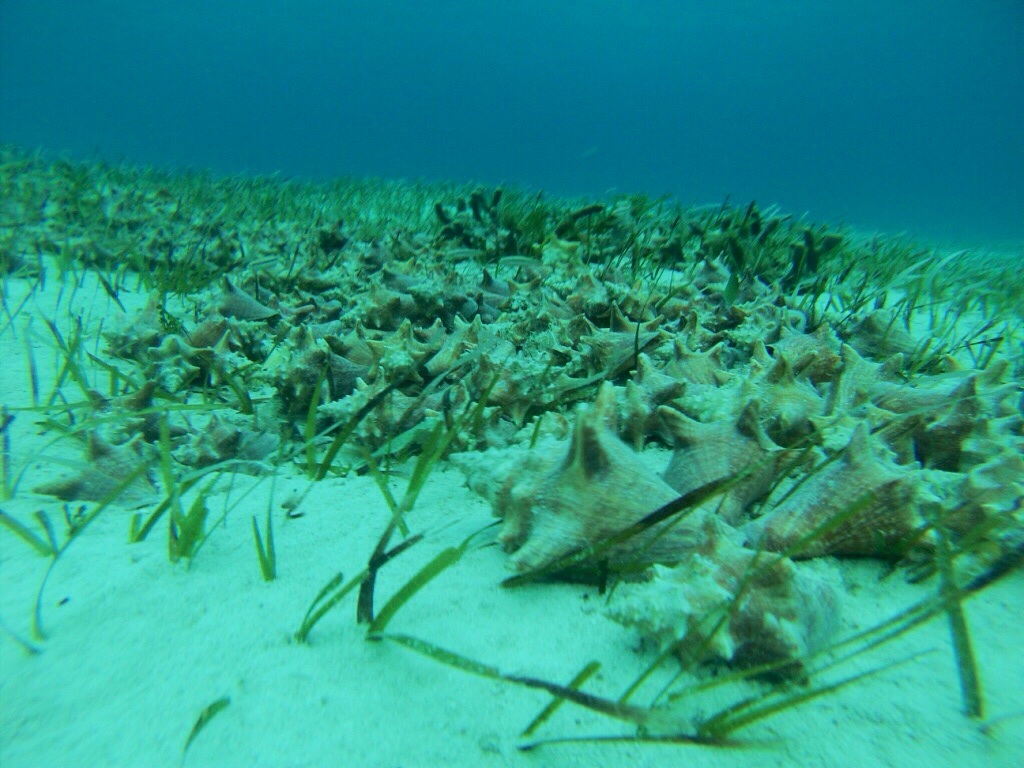This semester, the Sustainable Fisheries Team has been surveying the waters of South Eleuthera in search of juvenile queen conch. In 1993, South Eleuthera had the largest surveyed juvenile conch nursery in The Bahamas.

An aggregation of juvenile queen conch piled on top of each other in South Eleuthera
On the seashores of The Bahamas, it is common to see conch middens, or large piles of discarded conch shells. When fishermen return from their fishing trips, they take the fleshy meat from inside the shell and then throw that shell away. Recent conch shell midden data shows a significant increase in the harvest of juveniles. In South Eleuthera, 49.2% of the conch shells in one local midden are characterized as juveniles (lack of a flared lip).There has also been a significant decline in the number of adult conch mating aggregations in South Eleuthera.
Understanding if there is still an important juvenile conch nursery in South Eleuthera will help determine the current status of this economically and ecologically important species. Using methods created by researchers at the Shedd Aquarium, snorkelers are towed behind a boat on a manta-tow board with a Gopro attached. Images are taken continuously to document the number of conch, life stage and habitat type throughout the tow. The images are then pieced together to create a visual map of the tow. This methodology allows a rapid, accurate assessment of conch, and also documents the habitat types conch are being found in. The depths and temperature are also recorded for each tow.
During many of the surveys, only a small number of queen conch were observed, and in some tows no conch were found. But, recently, a high density of juvenile queen conch was discovered. These findings could help inform future sustainable harvesting strategies and conservation management for queen conch.
Our partner, the Shedd Aquarium, have a research team that is currently conducting further research to investigate the dispersal of conch eggs throughout the oceans currents. This further research is vital for understanding the full life cycle of queen conch and the locations of important habitats for this species.
We recommend that you only harvest conch with a fully flared lip with at least a 15mm thickness. This is when conch is considered sexually mature and can reproduce. It is important that species are able to reproduce before they are harvested, otherwise populations will most likely crash and possibly become endangered or even extinct.